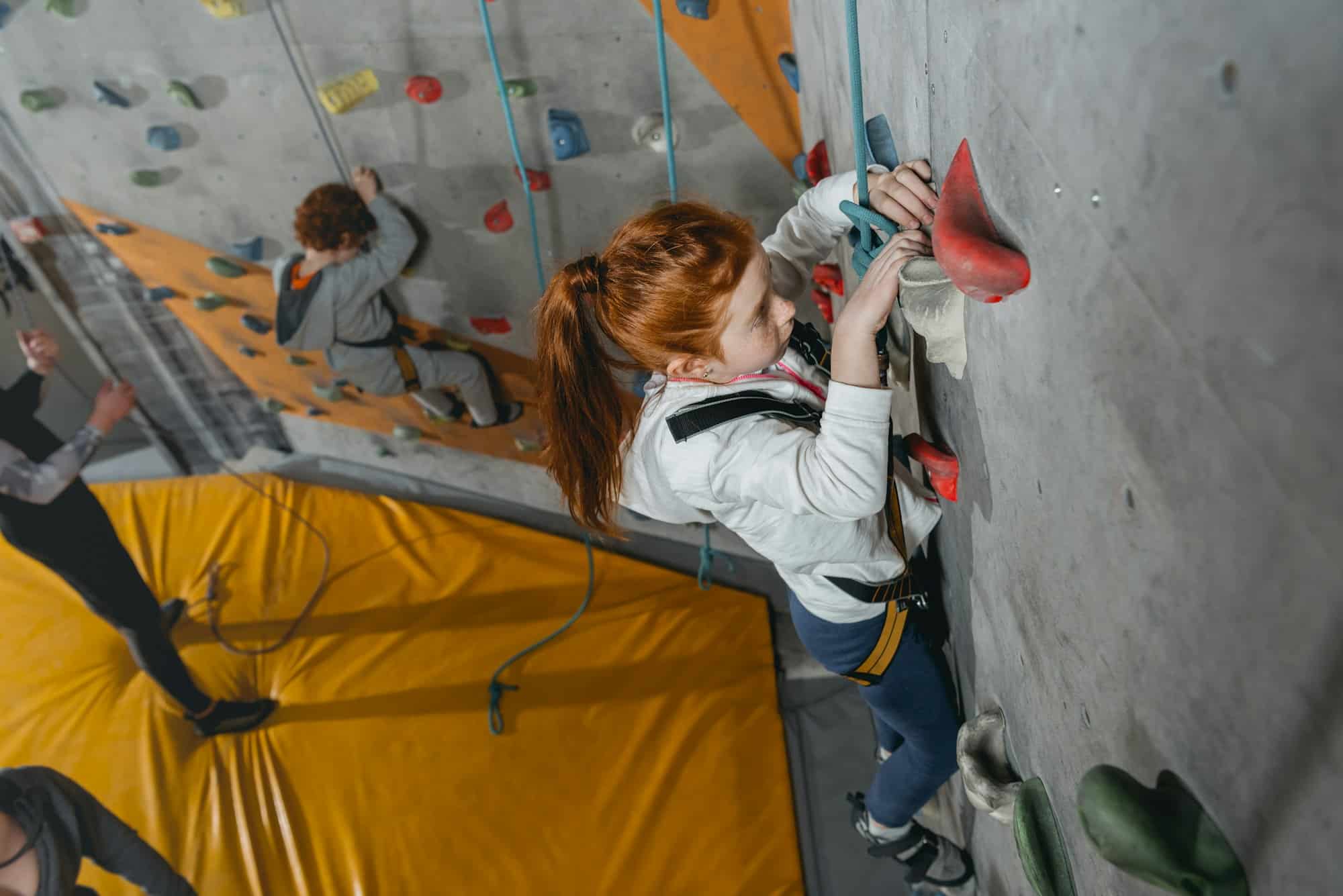What Are the Latest Techniques in Enhancing Grip Strength for Rock Climbers?

Aspiring rock climbers and seasoned pros alike, listen up! The exciting and adrenaline-filled world of rock climbing relies heavily on one fundamental attribute: grip strength. Both beginners and veterans know that without a strong grip, climbing can be nearly impossible. But fret not, there are multiple ways to boost your grip strength, and this article will divulge the latest techniques in this arena.
The Importance of Grip Strength in Rock Climbing
Before diving into the variety of techniques to improve grip strength, it’s vital to understand why it is so important for climbers. In the sport of rock climbing, grip strength is not just about being able to hold onto the rock. It’s also about having the endurance to maintain that hold for extended periods.
Dans le meme genre : What’s the Best Strategy for Psychological Preparation Before a Major Tennis Tournament?
The strength of your grip is directly proportional to your climbing performance. In fact, studies found on PubMed and Crossref confirm a significant correlation between improved grip strength and better climbing performance. For climbers, grip strength is more than just a physical attribute. It is also an indicator of mental fortitude and determination.
Techniques to Improve Grip Strength
Now, let’s move on to the heart of the matter – the latest techniques in training for enhanced grip strength.
Lire également : How Can Real-Time Biomechanical Analysis Improve Javelin Throw Techniques?
Finger Exercises for Rock Climbers
Among the key players in grip strength are your fingers. They are the first point of contact and crucial for maintaining a strong grip. They need to be strong, agile, and durable. A variety of finger exercises can help improve your grip strength for rock climbing.
For instance, finger flexion and extension exercises can be highly beneficial. Start by making a fist and then extend your fingers out as wide as you can. Finger curls are another great exercise. Hold a weight in your hand and, without moving your arm, curl your fingers towards your palm, then extend them out again.
You can also try finger taps. Tap each finger to your thumb, one at a time, and repeat this for several minutes. This will help with finger dexterity and strength.
Training Using Specific Climbing Equipment
Another way to enhance your grip strength is by using specific climbing training equipment. The DOI of a study published in the Journal of Strength & Conditioning Research suggests that climbers who trained using specific equipment saw significant improvements in their grip strength.
One such tool, the hangboard, is particularly beneficial. It can be used for various exercises such as dead hangs, repeaters, and max hangs. These exercises help target different aspects of grip strength and endurance, making your hands strong and durable for the demanding task of climbing.
Sports that Complement Climbing Training
Engaging in complementary sports can also significantly improve your climbing performance by boosting grip strength. For instance, gymnastics, which involves a great deal of hand and wrist strength, can be a terrific cross-training option.
Weight-lifting is another excellent choice. Deadlifts and other exercises that require a strong grip can help boost your overall hand strength.
Harnessing the Power of Technique
While physical strength is crucial, technique is equally important. By refining your climbing technique, you can make the most of your grip strength and enhance your overall performance.
A study indexed by PubMed affirms that climbers who employed better techniques could climb more efficiently compared to those who relied solely on their strength.
Climbing techniques like flagging, smearing, and jamming can help distribute weight more evenly across your body, reducing the pressure on your hands and fingers. This not only helps in managing fatigue but also improves your endurance.
Body Conditioning for Rock Climbing
Apart from specific hand and finger exercises, general body conditioning can also contribute to improved grip strength. Rock climbing involves the synchronization of the entire body. Therefore, overall strength and endurance can significantly impact your climbing performance.
Strength training exercises for the upper body, core, and legs can help enhance your grip strength indirectly. Activities like push-ups, pull-ups, lunges, and planks can play a vital role in bolstering your climbing performance.
Remember, the journey to improving your grip strength for rock climbing is a marathon, not a sprint. It requires consistency, dedication, and a well-rounded approach that includes finger exercises, specific equipment training, cross-training, technique refinement, and overall body conditioning. With these latest techniques and a strong resolve, you can surely climb your way to the top!
The Role of Resistance Training in Grip Strength Enhancement
Leveraging resistance training is another modern method that climbers use to boost their grip strength. This type of training typically involves performing exercises that pit your muscles against some type of resistance, such as free weights or resistance bands. According to a study found on Google Scholar, resistance training can significantly enhance grip strength and endurance.
Resistance training can target both the forearm and hand muscles, which play a critical role in rock climbing. A popular exercise among climbers is the ‘wrist curl,’ which targets the forearm flexors. This exercise can be performed using free weights or resistance bands. Simply hold the weight or band with your palm facing upwards, then flex and extend your wrist. Repeat this for several repetitions and sets.
Another beneficial exercise is the ‘reverse wrist curl,’ which targets the forearm extensors. Again, this can be performed using free weights or resistance bands. Hold the weight or band with your palm facing downwards, then flex and extend your wrist.
Finally, the ‘finger curl’ is an effective resistance training exercise that directly targets the finger flexors, which are crucial for a strong grip. Hold a weight in your hand and curl your fingers towards your palm, then extend them out. Repeat this for several repetitions and sets.
Remember, it’s essential to maintain proper form during these exercises to prevent injuries and ensure effectiveness. Therefore, it’s advisable to seek guidance from a fitness professional if you’re new to resistance training.
The Influence of Climbing Associations in Promoting Grip Strength Techniques
Numerous climbing associations worldwide are tirelessly working to promote the latest techniques for enhancing grip strength among rock climbers. These organizations conduct workshops, training camps, and webinars, imparting valuable knowledge about modern grip strength techniques. They also collaborate with researchers and fitness professionals to stay abreast of the latest findings and developments in this field.
The International Rock Climbing Association, for instance, regularly publishes articles and resources that discuss topics related to grip strength. They also provide climbers with access to a vast library of video tutorials that demonstrate various exercises and techniques to improve grip strength.
Moreover, many climbing associations have embraced social media platforms to reach a wider audience. They share tips, tricks, and snippets of expert advice that climbers can incorporate into their training regimes.
It’s worth noting that these associations also advocate for a balanced approach to grip strength training. They stress the importance of integrating specific grip strength exercises with overall body conditioning, technique refinement, and proper nutrition to achieve optimal climbing performance.
Conclusion: The Continued Evolution of Grip Strength Techniques
The quest to enhance grip strength for rock climbing is an ongoing journey. As the sport continues to evolve, so do the techniques and training methods that climbers employ to improve their performance.
Today, a variety of methods are available to climbers – from finger exercises, resistance training, and climbing-specific equipment to cross-training in complementary sports and technique refinement. Moreover, the role of climbing associations in promoting these techniques cannot be overlooked.
However, remember that improving grip strength is no overnight task. It requires patience, consistency, and a balanced approach. Furthermore, always prioritize safety when embarking on new exercises or training methods. Consult with fitness professionals, follow guidelines from reputable sources like DOI Crossref, PubMed Crossref, and Google Scholar, and adhere to the advice of your local climbing association.
Ultimately, with a strong grip, unwavering determination, and the right techniques, you can reach new heights in your rock climbing journey. So, buckle up, and embrace the thrill and challenges of rock climbing because the summit is worth every climb!
